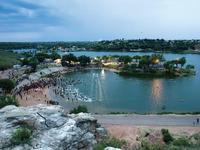Maui ❤️ Nate

Lubbock Attractions
Texas Tech University
Texas Tech University, often referred to as Texas Tech, Tech, or TTU, is a public research university in Lubbock, Texas. Established on February 10, 1923, and originally known as Texas Technological College, it is the flagship institution of the four-institution Texas Tech University System. The university's student enrollment is the seventh-largest in Texas as of the Fall 2017 semester. The university shares its campus with Texas Tech University Health Sciences Center, making it the only campus in Texas to house an undergraduate university, law school, and medical school.

Museum of Texas Tech University
The Museum of Texas Tech University is part of Texas Tech University in Lubbock, Texas. It is made up of the main museum building, the Moody Planetarium, the Natural Science Research Laboratory, the research and educational elements of the Lubbock Lake Landmark, and the Val Verde County research site. It features collections in anthropology, fine arts, clothing and textiles, history, natural sciences and paleontology.
Jones AT&T Stadium
Jones AT&T Stadium, previously known as Clifford B. and Audrey Jones Stadium and Jones SBC Stadium, is an outdoor athletic stadium on the campus of Texas Tech University in Lubbock, Texas, United States, built in the style of Spanish Renaissance architecture. It is the home field of the Texas Tech Red Raiders football team of the Big 12 Conference. Clifford B. and Audrey Jones Stadium opened in 1947. The original seating capacity was 27,000. After numerous renovations and expansions, Jones AT&T Stadium currently seats 60,454. The capacity makes the stadium the 44th largest college football stadium in the United States. Officially, Jones AT&T Stadium has the third-highest seating capacity of any college-specific venue in Texas behind Darrell K Royal-Texas Memorial Stadium in Austin and Kyle Field in College Station, but when referred to by actual seating capacity the stadium drops to fifth behind San Antonio's Alamodome and Houston's Rice Stadium.
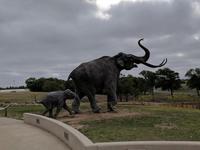
Lubbock Lake National Historic Landmark
Lubbock Lake Landmark, also known as Lubbock Lake Site, is an important archeological site and natural history preserve in the city of Lubbock, Texas. The preserve is 336 acres and is a protected state and federal landmark. There is evidence of ancient people and extinct animals at Lubbock Lake Landmark. It has evidence of nearly 12,000 years of use by ancient cultures on the Llano Estacado. It is run by the Museum of Texas Tech University.
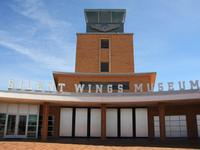
Silent Wings Museum
Silent Wings Museum, "The Legacy of The World War II Glider Pilots," is a museum in Lubbock, Texas. The museum is housed in the former tower and terminal building of Lubbock's airport during the 1950s, and 1960s. The museum is located on the site of World War II South Plains Army Air Field, where glider pilots were trained between 1942 and 1945, and after which time they were required also to command skills in powered flight.

Llano Estacado Winery
Llano Estacado Winery is a winery located in Lubbock, Texas. It is one of the oldest wineries in Texas. In 1976, Llano Estacado Winery was established in southeast Lubbock County, Texas, while it was still a dry county.[2] The state legislature passed a bill two years later permitting wine production in dry counties.[2] The winery planted its first vineyard in 1978.
CapRock Winery
Our Estate Vineyard located at Caprock Winery features two varieties, Malbec and Tempranillo. Malbec grapes tend to have an inky dark color and robust tannins, and are known as one of the six grapes allowed in the blend of red Bordeaux wine. Tempranillo is a black grape variety widely grown to make full-bodied red wines. Make sure you take a stroll in our 4.5 acre Estate Vineyard on your next trip!
McPherson Cellars Winery
The McPherson family has been a part of Texas viticulture and winemaking for over 40 years. McPherson Cellars was created to honor Winemaker Kim McPherson’s father, Dr. Clinton “Doc” McPherson, a founder and pioneer of the modern Texas wine industry. Doc was one of the state's prime grape growers and was the first in Texas to plant Sangiovese in his Sagmor Vineyard. We converted Lubbock’s historic 1930s era Coca Cola bottling plant in downtown Lubbock into a winery and our winery opened in the fall of 2008.

Lubbock Memorial Arboretum
Serene 93-acre nature sanctuary with gardens, walking paths, a 1913 chapel & educational programs. Located in the heart of Lubbock, The Lubbock Memorial Arboretum is a unique 93 acre open space and historical site located in K.N. Clapp Park. The Arboretum is a unique place to explore, discover, escape, and connect with our amazing Mother Nature. Not only is it home to a wide variety of plants, trees, vines, shrubs and flowers, we are rich with birds, butterflies and various animals. There are a wide variety of birds that nest on our grounds and others migrate through. The local Audubon Society chapter is planning a bird viewing facility with a watering and feeding area. The playa lake in The Arboretum is home to a variety of water fowl during the winter months and during August and September the butterfly migrations attract photographers from across Texas.
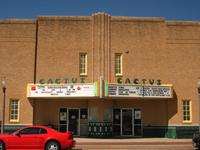
Cactus Theater
In 1938, Lubbock businessmen Joe H. Bryant, M. A. Sanders, and Glenn Woody built Lubbock's first suburban neighborhood movie theater. The Art Deco style theater was designed by architect Robert Maxey. The theater was built as a "second-run" movie theater and boasted a seating capacity of 720. It also had "washed air" cooling and a marquee with over 750 feet of neon lighting. The Cactus remained opened for twenty years. However, by 1957, there were seventeen movie theaters in the city. The competition from the other traditional theaters and the popularity of six new drive-in theaters forced the older Cactus out of business. The Cactus closed on May 6, 1958.
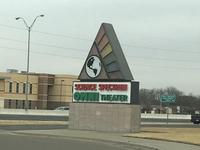
Science Spectrum & OMNI Theater
The Science Spectrum is a hands-on science and technology museum featuring over 250 interactive exhibits, West Texas' only public aquarium, and daily live science shows. Also housed at the museum is the Omni Theater, a 160-degree domed screen movie theater that allows viewers to feel as if they are surrounded by the film.
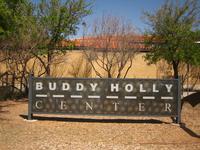
Buddy Holly Center
The Buddy Holly Center is a performance and visual arts center in Lubbock, Texas, dedicated to Buddy Holly as well as the music of Lubbock and West Texas more broadly. The Center features a permanent gallery for the Buddy Holly collection, which showcases artifacts and documents from Holly's childhood as well as his professional career, as well as the Texas Musician Hall of Fame, the Lubbock Fine Arts Gallery, and three additional visual arts galleries that host traveling exhibits.
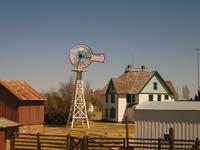
National Ranching Heritage Center
The National Ranching Heritage Center, a museum of ranching history, is located on the campus of Texas Tech University in Lubbock, Texas. The NRHC features almost fifty authentic ranch buildings dating from the late 18th to the mid-20th century. These structures include a railroad depot, homesteads, barn, blacksmith shop, schoolhouse, windmills and other historic structures. One views the exhibits through a self-guided walking tour. It is free to the public.

Prairie Dog Town
Of all Nature's wild creatures, none is more appealing and entertaining to watch than the Prairie Dog. Prairie Dog Town was established in Mackenzie Park in the early 1930’s by Mr. and Mrs. Kennedy N. Clapp. It was started with four dogs and two burrows and was the first protected prairie dog colony of its kind. In 1935, the colony was moved to it’s current location when Mackenzie Park became a state park. For his contribution to Lubbock and prairie dogs, Mr. Clapp was named Mayor of Prairie Dog Town in perpetuity. Within its first five years at its new location, Prairie Dog Town became world famous and a favorite tourist attraction with its own Goodwill Ambassador, Prairie Dog Pete. To this day, Prairie Dog Town still captures the imagination of visitors as evidenced by the 2004 Lubbock Convention and Visitor’s Bureau tourism study. The survey showed Prairie Dog Town as the 5th most visited attraction in Lubbock by visitors from outside the city.
Dan Law Field
Dan Law Field at Rip Griffin Park, nicknamed "The Law", is the home stadium of the Texas Tech Red Raiders baseball team in Lubbock, Texas. It is located on the Texas Tech University campus, adjacent to Jones AT&T Stadium and Fuller Track. Dan Law Field was rated as one of the top three places to watch a college baseball game by Sports Illustrated On Campus. From 1988 through 2011, the ballpark was named Dan Law Field after former Texas Tech baseball player Dan Law who was instrumental in the stadium's renovation. Law played for the Red Raider football team from 1955–56 and baseball from 1956-57. Since the 2012 season, the ballpark has been known as Dan Law Field at Rip Griffin Park. An anonymous donor to the 2012 renovation requested the field be named after Rip Griffin, a long-time supporter of Red Raider baseball and Texas Tech athletics. The ballpark has a permanent seating capacity of 4,368.
United Supermarkets Arena
United Supermarkets Arena (previously the United Spirit Arena) is a multipurpose arena on the campus of Texas Tech University in Lubbock, Texas. The 15,098-seat arena opened in 1999 and is home to the Texas Tech Red Raiders basketball, Texas Tech Lady Raiders basketball, and Texas Tech Red Raiders women's volleyball teams. The arena features a Spanish Renaissance exterior facade, matching architectural style of the rest of the Texas Tech University campus. Standing at the southeast entrance of the arena is the eight-story Victory Tower. At 96 feet (29 m), Victory Tower is the 16th-tallest structure in Lubbock.

Louise Hopkins Underwood Center for the Arts
LHUCA is committed to growing the cultural fabric of our community, fostering creative industries and supporting a creative workforce that is strong and thriving LHUCA began as a dream of our founder Louise Hopkins Underwood, whose spirit and love for the arts moved like the West Texas winds across a culturally barren landscape, building a regional fine arts center that engages people of all ages and of all walks of life. Her life-long dedication to the arts was recognized throughout the years, but none greater than her induction into the Texas Women's Hall of Fame in 2008, alongside Sandra Day OConnor. Founded in 1997, this center was established by Mrs. Underwood and a core group of forward-thinking individuals. They possessed a clear understanding of the relationships between accessible cultural experiences and opportunities and the quality of life in a region.

American Wind Power Center
The American Wind Power Center is a museum of wind power in Lubbock, Texas. Located on 28 acres (110,000 m2) of city park land east of downtown Lubbock, the museum has more than 160 American style windmills on exhibition. The center was established in 1993 by Miss Billie Wolfe and Coy F. Harris. At the present time, there are more than a hundred rare and historic water pumping windmills displayed inside. Another sixty windmills are erected on the grounds with many pumping water.
Bayer Museum of Agriculture
The Bayer Museum of Agriculture takes you from horse drawn implements to the tech-Savvy, computer GPS, driven equipment and farmers of today. On April 13, 2012, the American Museum of Agriculture opened the doors of its new facility, the Alton Brazell Exhibit Hall, at 1121 Canyon Lake Drive. Over forty years ago, a handful of Lubbock civic leaders, including Alton Brazell, recognized the region’s agricultural heritage was slipping away. In 1969, the Lubbock County Commissioners’ Court gave Brazell the authority to begin collecting machinery that was a part of the technical transformation that took place on South Plains’ farms. The tractors, combines, plows, drills and thousands of other farm-related artifacts became a part of the Lubbock County Historical Collection.

Legacy Play Village
The Legacy Play Village (in its current state) is tired and in need of extensive repair, but better yet, it needs a new Legacy! It is time to rebuild our worn-down community playground for the next generation. The “Legacy” of the Legacy Play Village legacy lives on through many in our community who were the first children to play on the new playground back in 2002 and are now the community adults that will help us rebuild!
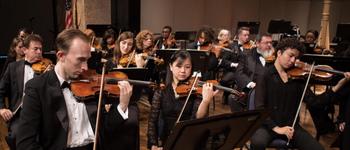
Lubbock Symphony Orchestra
The Lubbock Symphony Orchestra (LSO) is an orchestra based in Lubbock, Texas. The orchestra performs at Lubbock Memorial Civic Center Theatre. Since 2012, David Cho has served as conductor.[1] The orchestra was founded by William Harrod in 1946.
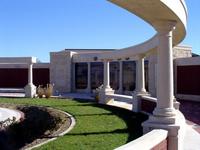
Lubbock Area Veterans War Memorial
The Lubbock Area Veterans War Memorial was dedicated on December 7, 2003. The Memorial is a reminder of the sacrifices of the men and women who have given of themselves for our country. Some served, and some gave all for the cause of Freedom. The bricks that make up the memorial honor Veterans that served in the Armed Forces. While no Soldier who died in any manner during times of war is valued any less than another, the names inscribed on the marble wall are reserved for the Department of Defense classification of Killed in Action. The Lubbock Area Veterans War Memorial is among the largest memorials in the United States outside of Washington D.C., with a Construction cost of $1.2 million dollars. Bricks are still available for those who wish to honor a loved one, or for those members of the Armed Forces who wish to have a lasting memorial to the time they served their Country.
